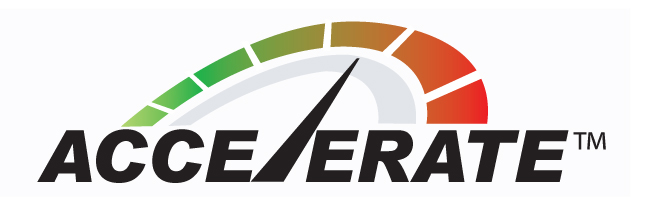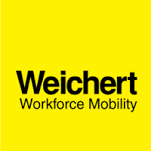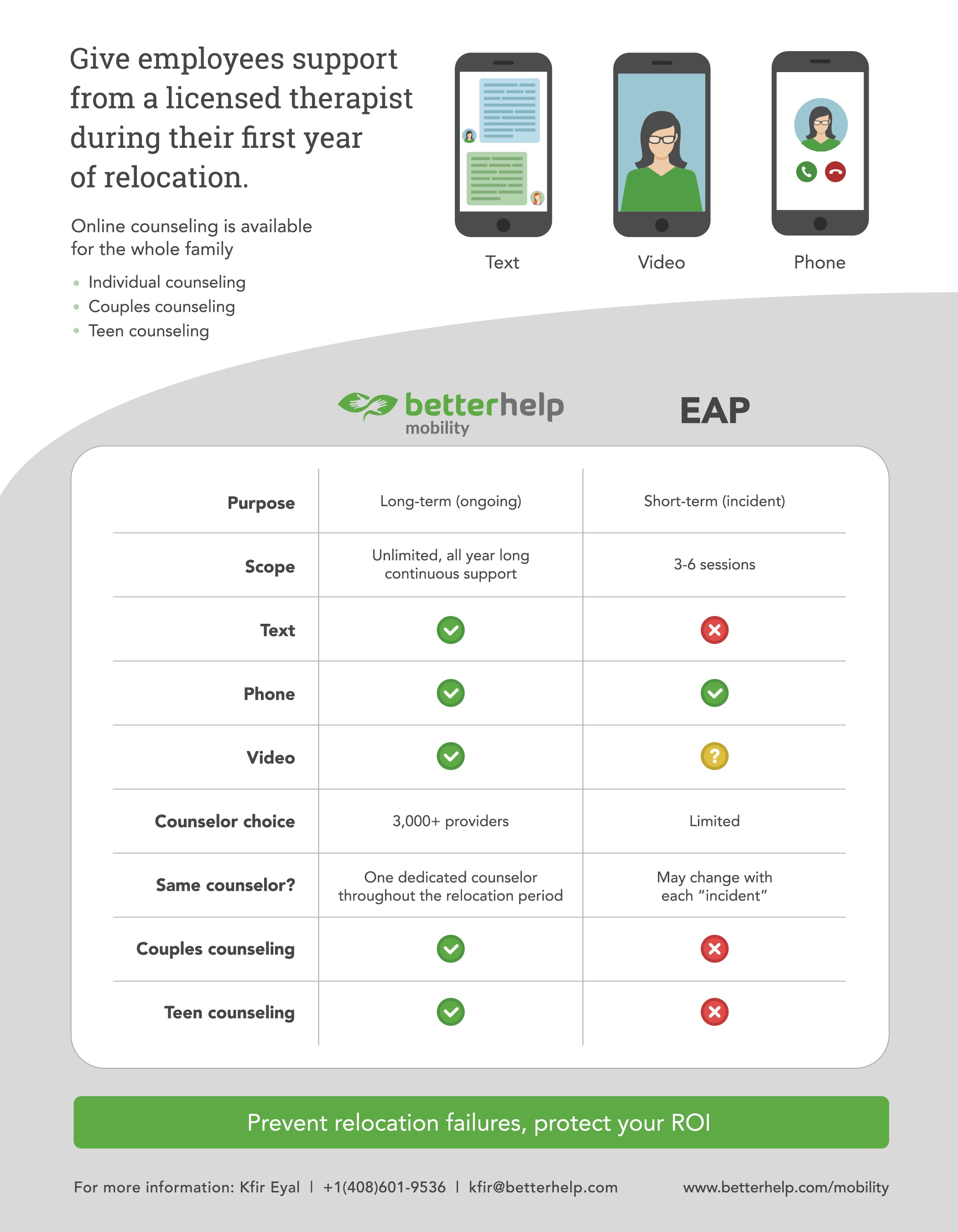WELL-BEING of the FAMILY + ASSIGNEE is GOOD BUSINESS
Silicon Valley JAN 17 Plug&Play TechCenter, 440 N Wolfe Rd, Sunnyvale 94085 Domestic; time to fix RELOCATION PRICING US Bound / global out-bound Design-think talent life-cycle Corporate RoI =assignee family well-being=good business Duty of Care; WELLNESS=good business Domestic; Destination services hot Accelerate performance of assignee via engagement design-think S-curve anticipates issues, enables plan business case to leadership accelerating performance of mobility teams align mobility with talent strategy REALTOR ReloDirectors; where rubber meets road A X = assignee experience stimulating education; connections can, if you’re lucky, last a lifetime GLOBALHR ExecutiveNetwork convenes 2019 role of the Global HR exec Board to CHRO’s: get RoI on Talent Strategy PressClub members get free regis, private intros + LatAm linkage with Silion Valley media training; public speak, interviews, 7sec pitch better help coming for assignee family-members 9-4:30 +reception; $250 smarter buy 2@$195/seat; 3@$150/seat; 4+@$123/seat...REGISTER FAST EASY simply reserve seats email publisher@globalbusiness.media txt/tlk 619.787.3100 invoice follows
GLOBALHR EXECUTIVE NETWORK
EDUCATION PROGRAM
Global HR Executive, 2019 Role
Accelerate well-being of transferee/assignee & family
Accelerate sourcing/developing/integrating talent “everywhere”
Accelerate resilience despite “change” disruptions
Accelerate performance of mobile talent
Accelerate performance of mobility teams
Accelerate communications with multi-stakeholders
8:30
check-in opens, refreshments
9
Purpose; GLOBALHR EXECUTIVE NETWORK
About; your KPI’s matter to me
Ed Cohen, Content Developer & Moderator
9:30 – 10
Opening keynote
LEARNING and WELLNESS
in the digital era
Marjorie Etter, Instructional Design/trainer![]()
10
break
10:30-11:15
Paradox of Mobility Pricing
Mobility pricing models are misaligned
with corporate cost containment goals
Discussing the elephant in the room
Gary Conerly, CRP
11:20 – 12:15
DOMESTIC RELOCATION 2019 will be impacted by Apple’s American growth plan, Amazon’s new HQ’s; will policies and practices change?
Ferrah McKeown, CRP, GMS; Director Client Services – DwellWorks
John Habanek, Executive Director
Sales Strategy & National Client Relationship Management
David Croft, Vice-President Business Development

12:15- 1
lunch
1:15 – 2
RoI of WELL-BEING
TRANSFEREE and FAMILIES
Alon Matas, Founder and President


 Kfir Eyal, Head of Sales and Partnerships
Kfir Eyal, Head of Sales and Partnerships
2:15 – 4:30
GLOBAL
Catalina Mayorga, Global Mobility & Immigration
Riverbed Technologies
Claudia Howe, CPA, Tax Partner; Global Mobility Tax![]()
![]()
Steve Brown,
Elevating Global Mobility as a Differentiating Talent Strategy
Electronic Arts
Haley R Friary, SHRM-SCP, SPHR, GPHR
Vice-President Global Human Resources
Eric Halverson, Director, HR Global Mobility
Natacha Sittner
Senior Talent Mobility Manager
4:30, reception
HOT TOPICS Please read; prepare to discuss
APPLE, AMAZON, and others taking the work to the people where they can afford to buy homes, live comfortably and raise a family. Relocation policy & practices are sure to change. What say you?
……………..
Global Talent Management:
Mind the Gaps
…Goodbye ’18, Hello ’19: Trends and the work that needs to be done
Written by Olivier Meier, Mercer
The pace of change in talent mobility and global HR in general keeps accelerating as technological innovation, new generations entering the workforce, and new forms of global mobility are emerging. These ongoing changes bring a mixed bag of heightened employee expectations, hopes of better management practices and business uncertainties, and force HR teams to reassess their practices. The employee value proposition is evolving towards a more flexible one in the coming years ahead.
When we look closely at talent mobility practices, a number of unresolved issues, or “gaps”, appear. They are related to the discrepancy between initial objectives and the reality of mobility from diversity, technological, generational, and talent management perspectives.
These issues illustrate the ambivalence of talent mobility – well managed, it can help bridge talent and business gaps, but poorly executed, it could widen them. Whether talent mobility will deliver its promises (or not) will depend on the future strategies and choices being made at the organizational, departmental, or individual levels. When we start analyzing these gaps, we open the door to rethink what potential challenges lie ahead and make the plans to start addressing them.
GAP 1: DIVERSITY
There is a sense of repetition when talking about diversity in the mobile workforce. While awareness of the problem has increased and some companies present remarkable success stories, progress is too slow – a statement we are making every year. Women and some minorities are underrepresented in the mobile workforce, opportunities in terms of career progression at managerial level remain limited and pay parity has not yet been achieved.
“If we all agree about the problem, what’s taking so long?” is the question that comes to mind. Here are a couple of comments to complement what we have said this year in previous articles:
- The perception of the problem must move from purely moral to pragmatic (business benefits) perspective. However, the business benefit of diversity at managerial level materializes want organization reach a certain diversity threshold – the increased participation of women and minorities in the workforce allows for the emergence of new role models, new ideas and perspectives, as well as cost-saving opportunities (a wide talent pool means more choice to find candidates).
- When talking to organizations, the differences in terms of perception depends on how far they are on their diversity journey. While companies at the beginning of the journey might struggle with the practicalities of the diversity concept, others that have made the most progress can attest the business value of the gender parity and diversity – L’Oréal is a good example of a success story.
- Another point to bear in mind that while putting diversity on the radar is a first step, it needs to be followed by a pragmatic strategy to build a diverse talent pipeline. During a recent conference the participants concluded: “We agree on the diversity objectives, but we simply don’t find enough candidates with the right qualifications.” There is no easy fast track to diversity, unless you want risk frictions within the workforce or even reverse discrimination. Building a strong talent pipeline takes time and training. Reskilling is a priority, as is opening up new opportunities for women and minorities joining or rejoining the workforce after a temporary career break.
- Finally, it is important to move from diversity to real inclusion: It’s not just the number that matters, but the active participation of women and minorities and their contribution to business at a strategic managerial level that is the goal and a sign that the gap is finally closing.
Could technology help bridge the diversity gap or widen it?
GAP 2: TECH
We usually assume that technology and the use of talent analytics can help remove decisions biases. The reality is more complex: unconscious biases can spill into the analysis and be eventually reinforced by the results. For example, the success criteria used in the analysis are based on a specific existing group profile and could disadvantage individuals from other groups. This should, however, not lead to knee-jerk reactions and a strong rejection of technology and analytics. Striving for more data-driven HR decisions and less assumptions is a step in the right direction.
Another potential downside of analytics and of the current technological revolution for talent teams is that a gap could emerge – those who master analytical skills (or at least understand analytics) and those who don’t. It could create a divide between departments in the organization and within the HR community itself. A risk exacerbated at a time when part of the mobility function is threatened to be made irrelevant, outsourced, or automatized and struggle to become more strategic.
In Mercer’s survey “How global mobility is responding to new dilemmas” from August 2018, 77% of respondents reported that implementing mobility metrics, predictive analytics and track ROI of assignments was major issue or at least somewhat of a challenge. This a newfound sense of urgency to reskilling and master the basics. A misconception is that only IT or data experts will be needed while the actual requirements are about connecting technology with business needs to drive change.
Technology is also impacting the debate about generations.
GAP 3: GENERATIONAL
The perceived need for digital experts has led to a recruitment frenzy aimed young techno-savvy talent while older employees are left unsure about their career perspectives and struggling for attention. Employees over 50 traditionally worry about job security, a trend that have been accentuated by technological development. There are gaps in the way the different generations in the workforce are managed, fueled by the perception of skills and expectations of the different generations. Some of these perceptions hold a degree of truth – the new generations are shaped by new technologies unlike any of their predecessors. But some of the new generations’ alleged traits are exaggerated or confused with the traditional opposition between young and old people. Younger generations are earlier adopters of new trends and technology, but are not an alien tribe with vastly different skills or aspirations as their elders. What can’t be ignored is that older professionals represent a significant talent pool, and are becoming a fast growing part of the overall population. In the context of a talent shortage and shrinking workforce, attracting and retaining older professionals will become increasingly important. Millennials may be more digitally savvy, but older workers offer essential core skills – from international business management skills to engineering – that can plug the growing skills gap that multinationals are experiencing.
The gaps within the workforce are not just about age and minorities.
GAP 4: INSIDERS / OUTSIDERS
While companies have long valued length of service as a sign of loyalty, current business models based on the acquisition of new digital talent and on borrowing talent – freelancers and gig workers – increasingly reward new newcomers as opposed to employees who have been in the company for many years. On paper, the gig economy model – in which workers take on temporary work to perform specific tasks or projects – looks like a win-win for the company and for the employees.
In practice, companies need to avoid having a fragmented workforce with employees on one side and the gig workers on the other side. How does one motivate a gig worker to go the extra mile, convey the official messages, and uphold the values of the company? Replacing developmental moves with project-based assignments done by gig workers and a generally greater reliance on gig workers, as opposed to building up the internal workforce, could lead to a less skilled talent pool in the long run.
HR teams are not equipped to follow the careers and evaluate the performance of this new category of professionals. This raises questions about the relevance and consistency of performance review and career management processes.
Breaking the divide between insiders and outsiders will require a specific talent strategy to integrate the newcomers and avoid demotivating in-house employees.
Could talent mobility itself be widening the gap between employee groups?
GAP 5: MOBILITY
If mobility is good for employees’ careers and a necessary stage in reaching managerial levels in large multinationals, what about non-mobile employees? We are witnessing a growing gap between highly skilled mobile employees willing and able to market themselves and non-mobile local employees with a slower career progression in their company and greater job insecurity on the marketplace.
Is there a need to ensure that the opportunities for moving are available to a greater number of employees and can a substitute for mobility be provided to those who are not mobile for personal reasons or would it be too costly for the organization? This could take the form of virtual moves, short international training or new ways of flexible working. Another way to bridge the gap is take a wider view of mobility and consider job mobility, i.e. bring jobs to people as opposed to bringing the people to the job.
Digging one level deeper in the analysis, we can question the absolute value of mobility and ask ourselves what type of moves are really beneficial for an individual’s career: not all assignments are equal and we often see a mismatch between the talent agenda of the company and the realities of talent mobility.
Mobility might be presented as a boost for an employee’s career while in reality it brings no tangible benefit. Worse still, former expatriates could be passed over for promotion due to their lack of visibility and absence of networking internally. They might stagnate in their current roles and not use their newly acquired skills.
Mapping potential career accelerators with assignment destinations is a good exercise: working in selected destinations or being on specific types of assignments could be identified as a fast track to reach top managerial levels while other destinations provide little career benefit.
The talent mobility gap is also reflected in the communications and the way expectations are mismanaged.
GAP 6: COMMUNICATIONS / EXPECTATIONS
A talent mobility policy’s introduction reveals much about a company culture and the role of mobility within the organization. Who wrote this introduction (top management, CEO, or a lower level manager)? What promise has been made in terms of career, remuneration, and lifestyle? Is there a discrepancy between this message and actual practices?
The mobility policy philosophy should be summarized in a 60-second elevator pitch. What is the program about: financial gains, career acceleration, and lifestyle facilitation? A clear story needs to be set. This story could be one making talent mobility the cornerstone of a career in the company, or on the contrary admit that mobility will be supported by the company, but is not essential.
The important point is consistency. Organizations are rarely completely off the mark with their compensation structures and policies, but they often fail to connect the realities of their mobility practices and their promises to employees.
Words matter, but so do success stories and role models. How many members of top management are former expatriates? Are there role models and success stories that attest to the delivered promises of mobility?
Setting a clear communication implies having a long-term vision, more than just short-term management.
GAP 7: LONG-TERM VS. SHORT-TERM
The pace of change in organizations is accelerated due to the frantic attempt to go digital. Millennials are job hopping, looking for training and fast career progressions. Management is focused on short-term financial objectives. International assignments are becoming shorter. There is a premium on speed and on change management.
The fact that the length of tenure in a given job is shortened also means that assignees and managers don’t stay long enough in their current jobs to see the consequences of their decisions.
We would like to think about mobility management as a straightforward journey in the direction of more structured, efficient, and business-aligned practices. In reality, many events such as mergers and acquisitions, downsizing, business contraction, cost-cutting exercises, change of management or business strategy can derail this tidy evolution model and send mobility programs on a roller coaster ride. From a practical perspective, this means that companies might have to take a step back and simplify some of their practices. The long-term vision, if any, might be drown in the urgency of short-term changes and reorganization.
Recognizing this rollercoaster experience and integrating it into the management thinking is a first step. But striking the right balance between short-term priorities and the long-term vision of what the mobility function is about, and what it should bring to the business, as well as what mobility should mean for the employees and their career is the real objective.
This balance should in turn be reflected in the way people are managed: looking at mobility as an important step in the overall career of an employee, rather than an isolated event managed from a purely short-term practical perspective.
From a business perspective, it means reflecting on the role mobility should play in the important challenges a company will face, such as talent sourcing, new market acquisitions, organizational agility and its capacity to adapt to future changes and trends.
………………………………………………………………………
………………………………………………………………………
International Project Assignments Are Pushing the Boundaries of Global Mobility
A quick poll in conjunction with Mercer’s Expatriate Management Conference in 2018 showed that, in an increasing number of organizations, the mobility function is responsible for the administration of international project assignments. Nearly 90% of the responding mobility managers confirmed that their organizations have international project assignments, and 80% of respondents are responsible for their administration. With this trend, new challenges are emerging. Let’s have a look.
CHALLENGE 1: TERMINOLOGY
There does not seem to be a common definition of an international project assignment.
Mercer’s poll showed that about 40% of the responding businesses define an international project assignment as simply an international assignment to a project, regardless of its duration, while 60% specified a period of time.
Some organizations also differentiate between project assignments for an external client… or for an internal project.
Apart from the lack of clear definitions, most businesses do not have any formal policy or regulations for their international project assignments (73%). If they exist, they often overlap with those for traditional long- or short-term assignments.
No matter how you approach international project assignments, make sure that your company has a precise definition and corresponding guidelines in place that allow for consistent handling and fair treatment of all internationally mobile employees.
For this discussion, we define international project assignments as assignments to client projects abroad, whereas assignments to projects abroad within one organization are called international assignments.
CHALLENGE 2: FAIR, EQUAL TREATMENT
Determining an individual compensation package for an international project assignment differs from traditional forms of international assignment compensation. Some employees may have been hired especially or exclusively for project work. Others are assigned to work on international projects based on short- or long-term assignments or commuter packages.
Those differences can lead to inconsistencies in compensation between the assignees depending on where they come from and how their project assignment is defined in the home country.
Clear internal regulations differentiating target groups and assignment types increase the transparency of the mobility program and ultimately increase its acceptance among employees.
CHALLENGE 3: RoI
In Mercer’s 2017 Worldwide Survey of International Assignment Policies and Practices, the vast majority of respondents stated that a business case is required for an international assignment (62%) and that they prepare corresponding cost estimates (96%).
However, only 43% track the actual costs against budgeted costs, and only 2% have defined how the return on investment (ROI) of an international assignment is quantified.
It is often linked to a mid-to long-term perspective and not easily expressed in pure economic figures. However, it is possible to track success by means of faster promotions or higher retention rates of expariates.
The ROI of international project assignments, in contrast, is easier to measure. Actual costs can be compared to the original estimate and the price paid by the client.
This transparency leads to higher cost pressure, which calls for a greater flexibility with respect to the applicability of existing internal rules and regulations to be able to offer projects at a competitive price.
In conclusion, the short-term business value (winning and conducting the project in a profitable manner) and the mid- to long-term value of international assignments (for example, filling a skills gap in the host location or employee development) have to be balanced diligently, which can be achieved by a thoroughly segmented international assignment policy.
CHALLENGE 4: LARGE NUMBERS OF INTERNATIONAL PROJECT ASSIGNMENTS
Depending on the industry sector, the number of international project assignments in an organization can be extremely high.
One of the respondents in the conference poll indicated that they handle about 23,000 international project assignments per year.
Therefore, the resources needed in the mobility function will have to be increased or resources reallocated once mobility takes over the responsibility for international project assignments.
You should also review the service delivery model as well as individual procedures and, if necessary, adapt them in order to enhance the efficiency and effectiveness of the international project assignment administration.
Using the right technology can also help streamlining processes and making a large number of international project assignments manageable.
CHALLENGE 5: DEPLOYMENT where?
International project assignments take place not only in the company’s regular assignment destinations but also in new locations at client sites. The company therefore may not have any resources in or knowledge about the location. Client resources or external vendors can be used to obtain necessary information or to perform necessary services, such as immigration or payroll. In addition, if employees perform services in hardship locations, their safety and security need to be considered.
CHALLENGE 6: COMPLIANCE
When it comes to international project assignments, mobility is regularly asked to deliver results even faster than for traditional international assignments because requirements tend to come up or change at short notice.
However, compliance is as complex as for any other international assignments and needs to be evaluated individually. This is true for external as well as internal compliance issues.
Although compliance is regarded as one of the most important aspects by many mobility managers, we have seen that compliance is just the tip of the iceberg, and the list of challenges presented in this first part of the article is not exhaustive.
We will continue our considerations with the companies’ duty of care and possible solutions in part 2 of this article. Stay tuned!
get more info, contact the author, Juliane Gruethner, on LinkedIn
Guest Editorial- European view
Memo from the Producer/Director
WHAT’S THIS ALL ABOUT?
PEOPLE !
Ed Cohen, Developer
GLOBALHR Executive Network
GLOBALHR Executive Network™ thrives because it is an ‘open source’ event series with no restrictions on participation.
We strongly encourage dialog across the table, across the meeting room, on every topic, in every session™.
We request the honour of your company and your active participation.
OK, SO WHAT HAPPENS?
During our “live” training programs each delegate is introduced and every person in the room is invited to speak-up…question or comment.
Why?
Because the info exchange becomes stimulating and enjoyable; the energy in the room is palpable; practical take-aways multiply.
Some people come-in simply known as “provider” or stranger, but all depart as “colleagues” if not as friends.
Business relationships established or embellished; we all know this can last a life-time if we’re lucky.
It’s in our DNA to bring together smart business people from across silos and from across generations, from across borders, time and cultures… to meet, exchange ideas, learn, and thrive together within a non-threatening learning atmosphere to find solution pathways…and build trust™
















